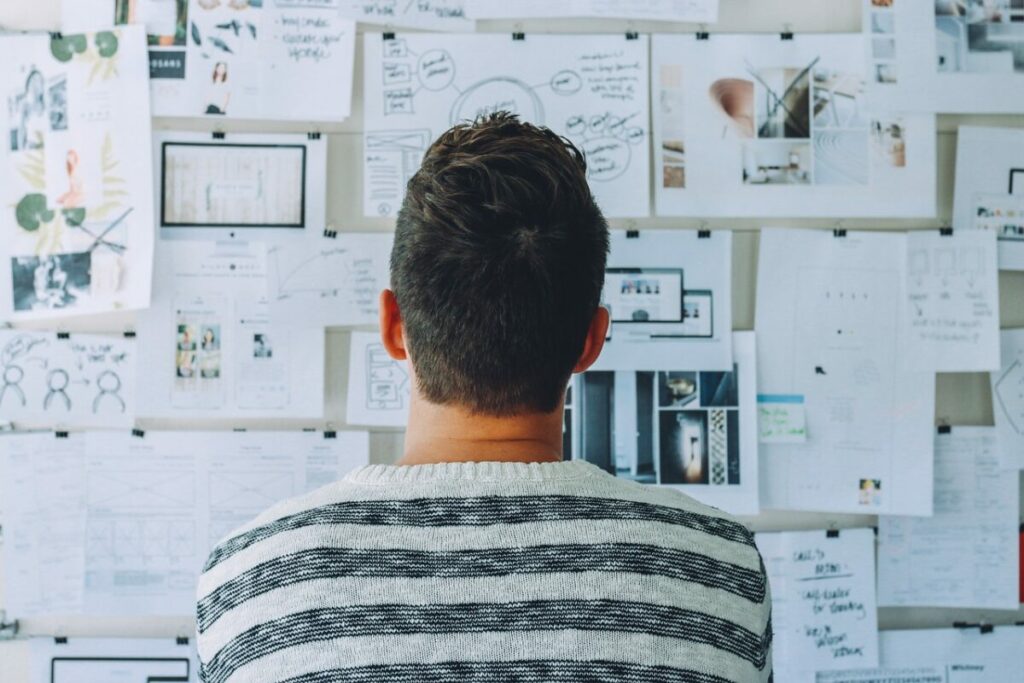Getting clicks but not conversions? Clicks are great when you’re advertising in a pay-per-click capacity. However, in order for PPC to be truly effective, those clicks have to convert into sales more often than not. Otherwise, you’re just spinning your wheels, spending your money, and not making any real progress.
Getting clicks but not conversions? Clicks are great when you’re advertising in a pay-per-click capacity. However, in order for PPC to be truly effective, those clicks have to convert into sales more often than not. Otherwise, you’re just spinning your wheels, doing more traffic, spending your money, and not making any real progress.
Paid search is an essential component of any robust digital marketing strategy, helping businesses reach their target audiences and convert leads into customers. As the digital landscape evolves, staying up-to-date with the latest paid search best practices also allows you to fine-tune your campaigns and maximize your return on investment.
When planning your paid search campaign, it’s important to establish clear goals and align them with your overall digital marketing objectives. By defining specific targets, you’ll be able to measure your progress and optimize your campaign for success effectively. By utilizing smart bidding strategies and staying informed about industry trends, your paid search efforts can bring substantial results for your business.
Keep in mind that automation and artificial intelligence are playing an increasingly prominent role in paid search strategies, allowing for more precise targeting and improved campaign performance. By incorporating automation tools and staying informed about cutting-edge techniques, you’ll be well-equipped to navigate the rapidly changing digital marketing landscape and achieve outstanding results.
Developing a Paid Search Strategy
Setting Goals

To develop an effective paid search strategy, set clear and specific goals. Define what you want to achieve with your campaign, such as increasing website traffic, generating leads, or boosting sales. Be realistic and ensure your goals align with your overall business objectives. This will help you focus your efforts and measure the success of your campaign. For example:
- Goal: Increase website traffic by 20% within 3 months
- KPI: Number of website visits from paid search ads
Target Market Research

Understanding your target market is crucial for creating a successful paid search strategy. Conduct thorough research to identify your ideal customers and create detailed buyer personas. This will help you segment your audience and tailor your marketing messages accordingly. Take these factors into consideration:
- Demographics: Age, gender, location, income, and education
- Psychographics: Interests, values, and preferences
- Online behavior: Search habits, preferred search engines, and social media usage
With a clear understanding of your goals and target market, you can create a highly-effective paid search strategy by selecting the appropriate keywords, crafting compelling ad copies, and optimizing your own landing page copy and pages. Keep in mind the importance of testing, analyzing, and adjusting your campaigns to improve performance and achieve your desired results. Remember to stay consistent with your brand voice and messaging, ensuring that your paid search efforts align with your other marketing initiatives.
PPC Campaign Structure and Setup
Account and Campaign Management

To achieve the best results in your paid search efforts, it’s crucial to properly structure and manage your account. Start by organizing your campaigns based on your marketing objectives, product categories, or geographic regions. This will allow you to easily measure performance and allocate budgets accordingly.
Consider using separate campaigns for brand and non-brand keywords. This distinction helps you monitor performance and optimize your campaigns more efficiently. Consistently review and adjust your bidding strategies to ensure that your desired keywords are reaching your target audience. Manage your account effectively by monitoring metrics such as impressions, clicks, and conversions to make data-driven decisions.
When setting up your campaigns, it’s vital to utilize Google Ads and their features to your advantage. Implement ad extensions, such as sitelinks or location extensions, to create more engaging ads and provide additional information to your audience. Regularly revisiting your paid search strategy helps in improving campaign performance, aligning it with the best practices.
Creating Effective Ad Copy

Well-crafted ad copy is essential for driving traffic and conversions in your PPC campaigns. First, ensure that you’re using relevant keywords in your ad copy to match the queries users might type in search engines. This allows your ads to appear when potential customers are most likely to engage with your content.
Utilize ad groups to segment your keywords and tailor your ads for each group. By creating specific and compelling ad copy, you can increase click-through rates and better connect with your target audience.
Focus on writing clear and concise headlines that clearly communicate your value proposition. Include a strong call to action that encourages users to take the next step, whether it’s to learn more, sign up, or make a purchase. Lastly, perform regular A/B testing to optimize your ad copy and find the combinations that generate the best results. Use the insights gained from testing to make data-driven decisions and improve your overall PPC strategy.
Keyword Research and Selection
Match Types and Consideration

To optimize your paid search campaigns, it is crucial to consider different keyword match types. These include broad match, modified broad match, phrase match, and exact match. Each has its advantages and limitations, so understanding their applications will help you tailor your campaigns effectively.
- Broad match allows your ad to appear for searches with similar phrases and even synonyms. This can help you reach a larger audience, but it might also show your ad for irrelevant searches.
- Modified broad match provides more control by showing your ads for searches containing specified words but can still include variations like plural forms or misspellings.
- Phrase match narrows down the reach further, targeting searches containing your specified phrase in the exact order but can still include additional words before or after the phrase.
- Exact match targets the specific keyword phrase without any variations, giving you the most precise targeting but potentially limiting your reach.
Always keep in mind the search volume of your chosen keywords, as it can affect your campaign performance. Focus on those with higher search volumes but ensure they are relevant to your business and have less competition. Tools like Ahrefs can assist you in identifying the right keywords.
Negative Keywords

Another essential aspect of keyword research for your paid search campaigns is making effective use of negative keywords. Negative keywords help you exclude specific search terms that may not be relevant to your ad or target audience.
To implement negative keywords, first, analyze your search query reports and identify any irrelevant terms or phrases triggering your ads. Once you have identified these terms, add them as negative keywords to your campaign. Doing so helps you avoid wasting budget on clicks that do not convert, improving the overall efficiency and effectiveness of your paid search campaign.
In conclusion, focusing on keyword research and selection, incorporating different match types, using conversion optimization and leveraging negative keywords is vital for the success of your paid search efforts. By mastering these concepts, you enhance your campaign performance and maximize your return on investment.
Budgeting and Bidding Strategies
Smart Bidding and Automation

To enhance your paid search campaigns, utilize Smart Bidding in your Google Ads. Smart Bidding leverages machine learning algorithms to optimize bids based on your desired performance targets, such as return on ad spend (ROAS) or target cost-per-click (CPC). It takes into account various signals, like device, time, and user behavior, helping you achieve better results with less manual effort.
Automation plays a crucial role in today’s paid search strategies. By incorporating automated bid adjustments and rules, you can improve your campaigns’ efficiency, reduce the time spent on manual bid management, and consistently adapt to market trends and fluctuations.
In addition, keep an eye on your Quality Score – a measure of ad relevance, landing page experience, and expected click-through rate (CTR). A higher Quality Score can result in average conversion rates, lower CPCs and better ad placements, maximizing your budget’s effectiveness.
Performance Maximization

The Google Ads Performance Max feature enables you to maximize your campaign performance across multiple ad networks simultaneously. By utilizing machine learning to predict when and where your ads are most likely to drive the desired customer actions, Performance Max helps deliver better results within your defined budget.
To ensure your budget is allocated efficiently, monitor and analyze your campaigns’ performance regularly. Stay vigilant for any patterns or trends that might signal a need for budget reallocation or alterations in your bidding strategies. Properly managing your budget and bidding strategies allows you to optimize your ad spend, minimize your cost-per-click, and ultimately achieve better return on investment (ROI) for your paid search campaigns.
Ad Extensions and Additional Features
Video Extensions

Enhance your paid search ads by incorporating video extensions. These allow you to showcase captivating video content alongside your ad copy, creating a visually engaging experience for potential customers. Video ads can significantly improve click-through rates and overall performance, so consider investing in high-quality video content to help your ads stand out.
Voice Search

As the use of voice-activated devices continues to grow, it’s crucial to optimize your paid search strategy for voice search. When creating your ad copy, consider how users speak when searching for products or services. Use natural language and conversational phrases to match voice queries better, increasing your chances of appearing in the results. Remember, voice search users often seek quick answers and immediate solutions, so focus on providing concise and relevant information tailored to their needs.
Mobile Devices

Don’t forget to optimize your paid search ads for mobile devices. Ensure your ad copy is concise and easy to read on smaller screens, and pay attention to any mobile-specific ad extensions available, such as click-to-call or app download buttons. Catering to mobile users can result in higher click-through and conversion rates, and a more seamless user experience across all platforms.
Leveraging Platform Advertising Options

Utilize Facebook’s advertising options to enhance your paid search strategy. Creating and targeting ads based on user demographics, interests, and behavior can drive more relevant traffic to your website. Explore various ad formats like image, carousel, and video ads to grab audiences’ attention. Remember to optimize your ads for mobile devices, as most Facebook users access the platform through smartphones.

Maximize your paid search efforts on Twitter by launching Promoted Tweets, Promoted Accounts, and Promoted Trends. These advertising options allow you to reach a broader audience, increase engagement, and ultimately, elevate your brand presence on the platform. Use eye-catching visual elements and concise copy to communicate your message effectively. Conduct A/B testing to identify the best combinations of ad creatives and targeting criteria for your campaigns.

LinkedIn offers a wide range of ad formats to help you reach a professional audience, including Sponsored Content, Sponsored InMail, and Display Ads. Choose the most relevant ad types for your target audience and tailor your messaging according to LinkedIn’s user base. Diversify your targeting options by considering variables such as job titles, industries, and skills. Track and analyze your campaign performance regularly to optimize your paid search results on LinkedIn.

Enhance your paid search strategy on Pinterest by using Promoted Pins, which enable you to showcase your content to users actively seeking inspiration and information. Incorporate visually appealing images and compelling headlines to increase the chances of engagement. Keep track of Pinterest analytics to understand how your Promoted Pins perform, and adjust your targeting and bidding strategies accordingly.
Snapchat

Snapchat offers several ad formats, including Snap Ads, Story Ads, and Sponsored Lenses, to help you engage with younger audiences. Develop creative and interactive ad content that aligns with Snapchat’s ephemeral and visually-driven nature. Make sure to adjust your targeting options to reach your desired demographic. Monitor your Snapchat campaign performance using the platform’s built-in analytics tools, and optimize your ad strategy for the best possible results.
Audience Targeting and Remarketing
Audience Segments

To maximize the effectiveness of your paid search campaigns, you should focus on audience targeting. By dividing your audience into unique segments, you can tailor your ad messaging and bidding strategies specifically for each group. This approach increases relevance and can drive both site traffic and revenue. Common segments include demographics, interests, past behavior, and geographic location.
Moreover, analyzing your audience data allows you to identify high-value groups. Prioritize these segments and optimize your ad spend for better results.
Remarketing Strategies

Remarketing plays a crucial role in re-engaging with users who have already visited your website. These users have shown some level of interest in your products or services, making them valuable targets for your paid search campaigns. Implement specific remarketing strategies to reconnect with these website visitors, and potentially increase conversions.
- Display Remarketing: Utilize display networks by creating display remarketing lists. Design visually appealing and targeted ads that remind users about your offerings and encourage them to return to your site.
- Search Remarketing: Also known as Remarketing Lists for Search Ads (RLSA), combine your search campaigns with remarketing audiences. Optimize bids on keywords related to your products or services, targeting users who have previously interacted with your website.
- Shopping Cart Abandonment: Recover lost revenue by retargeting users who have abandoned their shopping carts. Provide incentives, such as discounts or free shipping, to encourage them to complete their purchase.
By implementing these audience targeting and remarketing strategies, you can increase site traffic and boost your revenue while maintaining a confident, knowledgeable, and clear tone throughout your paid search campaigns.
Tracking, Testing, and Analytics
Optimization Techniques

As a marketer, it’s crucial to continuously optimize your paid search campaigns. One of the most effective ways to do this is through A/B testing. By testing different ad creatives, keywords, and bids, you can fine-tune your campaigns to achieve maximum results.
- A/B testing: Conduct split tests on your ad copy, keywords, and landing pages to identify the most effective combinations.
- Bid management: Regularly review and adjust bids based on performance to ensure you’re not overpaying for clicks while staying competitive in the auction.
- Competitive analysis: Keep an eye on your competition and adjust your strategies accordingly. Monitor their ad copy, offers, and landing pages to see if there are any trends you can leverage.
Reporting and Insights

Thorough reporting and insightful analytics are key to understanding the performance of your campaigns. Make sure you invest in proper tracking and analytics tools to gain valuable insights into your paid search efforts:
- Analytics: Implementing tools like Google Analytics or Adobe Analytics will help you understand user behavior on your website, allowing you to refine your campaign structure and ad targeting.
- Conversion tracking: Set up proper conversion tracking to monitor your campaign goals, such as sales, leads, or downloads, and assess the overall return on investment (ROI).
- Multi-channel attribution: Understand the value of each marketing channel and how they contribute to conversions collectively. This will help you allocate budgets more effectively across your different channels.
Always be ready to adapt and improve your campaigns based on the data you collect. Implementing these best practices in tracking, testing, and analytics will set you on the path to success in your paid search efforts. Keep learning and refining your skills, and remember that optimization is ongoing.
Staying Up-to-Date on Paid Search Trends
Latest Features and Updates

You must stay informed about the latest features and updates in the paid search world to excel in today’s competitive digital marketing landscape. This includes keeping track of any changes to the search engine results page (SERP) and understanding how they may affect your pay-per-click (PPC) strategies.
Ensure you regularly follow industry news and updates from major search engines like Google and Bing. This will enable you to adjust your campaign management techniques and optimization methods, helping you achieve better click-through rates and more effective results. By staying informed, you can:
- Align your PPC goals with the latest digital marketing trends.
- Make data-driven decisions for your campaigns.
- Allocate your budgets more effectively.
Embracing New Opportunities

As new opportunities in paid search emerge, you need to embrace them and adapt your strategies accordingly. Investigating new ad formats, audience targeting methods or bidding strategies could give you an edge over your competitors, resulting in more successful campaigns.
Here are some ways to seize these opportunities:
- Test new features and updates on a smaller scale before fully implementing them in your campaign.
- Compare the results of your new strategies to your previous ones, and adjust accordingly.
- Collaborate with your team to brainstorm creative ideas for ad copy and design relevant to the latest trends.
Remember, maintaining flexibility and staying adaptable to changes is crucial for your success in paid search. By staying current on the latest trends and embracing new opportunities, you can build more effective campaigns, achieve your digital marketing goals, and stay ahead in the fast-paced world of pay-per-click advertising.
Frequently Asked Questions
How can I improve my conversion rate for PPC campaigns?
To improve your conversion rate for PPC campaigns, start by analyzing your current data and optimizing your keywords and ads. Focus on writing compelling ad copies that appeal to your target audience, including strong calls to action. You can also improve your landing pages by ensuring they are relevant to the keywords and ads, have clear messaging, and are easy to navigate.
What are some effective strategies to enhance click-through rates?
Some effective strategies to enhance click-through rates include crafting attention-grabbing headlines, using clear and concise messaging, and including persuasive calls-to-action. Utilize ad extensions, such as sitelinks and callouts, to make your ads more informative and appealing. Additionally, try running A/B tests on your ads to determine what works best for your target audience.
How can I reduce my cost per click in paid search?
To reduce your cost per click in paid search, focus on optimizing your keyword bids and the overall account structure. Employ long-tail keywords, which are more specific and generally less competitive. Regularly monitor your campaign performance and adjust your bids accordingly. Furthermore, improve your Quality Score by optimizing your ad relevance, landing page experience, and expected click-through rate.
What factors contribute to a better Quality Score?
Factors contributing to a better Quality Score include ad relevance, landing page experience, and expected click-through rate. Creating highly relevant ads tied to their corresponding keywords will improve ad relevance. Ensuring your landing pages provide helpful and valuable content that matches user expectations will enhance the landing page experience. Lastly, optimizing your ads to maximize click-through rates will improve your expected rate.
What are the key performance indicators for a successful paid search campaign?
The key performance indicators for a successful paid search campaign include click-through rate (CTR), conversion rate, cost per click (CPC), cost per conversion, return on ad spend (ROAS), and Quality Score. Monitoring and optimizing these metrics regularly will help you gauge the success of your paid search campaigns and make data-driven decisions.
How should I structure my ad groups for optimal results?
Structuring your ad groups for optimal results involves organizing your keywords into tightly themed groups. This way, you can create highly relevant ads that cater to each group’s search queries. Divide the keywords into smaller, focused ad groups based on the important products, services, or themes for your business. This will make managing and optimizing your campaigns more efficient while improving ad relevance and overall Quality Score.
Related Resources

